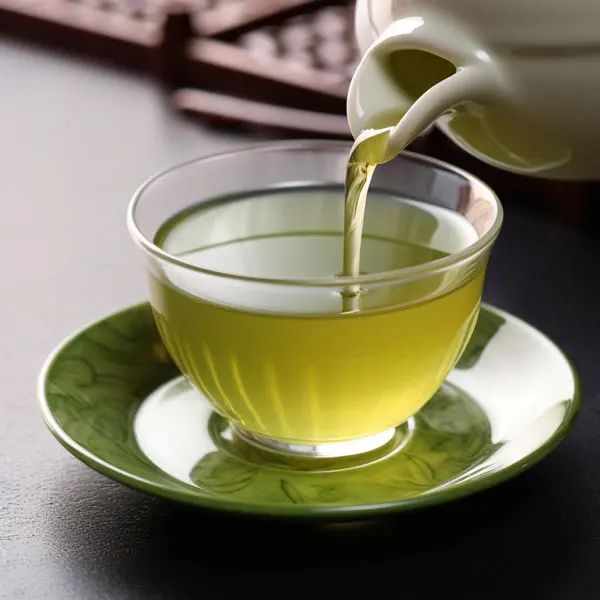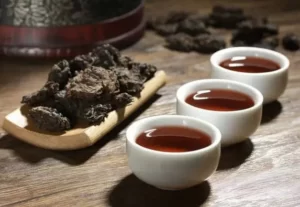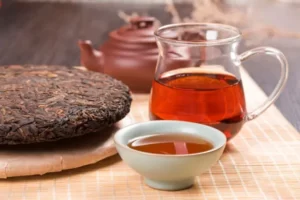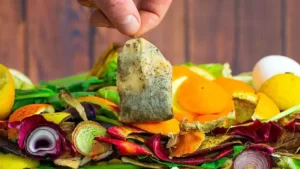Introduction
Welcome, friends! Grab your favorite Chinese tea cup set, pour a steaming brew, and let’s embark on a journey of discovery. Perhaps you’ve admired the beautiful patterns, vibrant colors, and intricate craftsmanship of Chinese Porcelain Tea Sets. Yet, have you ever wondered how these pieces get their unique names? Through this guide, we aim to unveil the mystique behind the official naming standards for these traditional Chinese tea sets. Stick around to unravel the secrets and, by the end of it, you’ll be a pro at naming any Chinese tea cup set. So, let’s dive in!

Official Naming Standards for Chinese Porcelain Tea Sets
Porcelain is a product of traditional Chinese culture and has been widely used by both the imperial court and the general public since ancient times. In order to cater to different users, porcelain factories are divided into “guan kiln” (official kilns) and “ming kiln” (folk kilns). The official kilns were the places where porcelain was produced for the imperial court, and the quality of the porcelain was the highest because it was used for the emperor’s daily use and gifting to officials. The folk kilns were the places where porcelain for daily use by the common people was produced, so the quality was rougher and the prices were cheaper, emphasizing practical functionality.

Most of the porcelain we see in museums is produced in official kilns, and you will find that their names often consist of multiple descriptive elements. Although the names of these Chinese porcelain teacups may seem complex, and even for the same type of vessel and glaze, there are differences between academic terms and folk names. So, is there an authoritative standard for naming porcelain with a unified naming convention?
The answer is: Yes.
In the Chinese museum system, there is a unified naming standard for the cultural relics in the collection. The “Guidelines for the Registration of Cultural Relics in Museums of the People’s Republic of China WW/T 0017-2013” stipulates the naming standard for porcelain as follows:
“Era (including the year if known) + Kiln (if the kiln is known) + Characteristics + Material + Vessel Shape”
Taking Chinese teaware as an example, it would be:
Ming Chenghua (Era) Jingdezhen (Location/Kiln) Blue and White (Surface decoration) Heart-shaped (Characteristics) Porcelain (Material) Cup (Vessel shape)
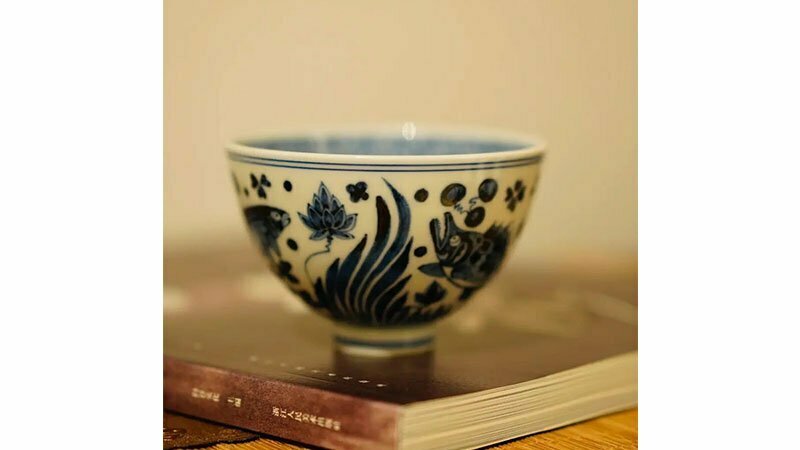
You can observe a law: The naming method of Chinese porcelain tea sets is somewhat similar to the naming of French cuisine, describing the characteristics of the porcelain in a straightforward manner.
In general, the name includes six parts:
- Production Time: Era (Tang/Ming/Qing…) + Year (Yongle/Chenghua/Kangxi…)
- Production Location: Kiln (Ruyao/Guanware/Ding Kiln…) or production address (Jingdezhen)
- Surface Decoration: Glaze color (blue/white/sky blue/clear blue…) or type of polychrome (blue and white/famille rose/fencai/doucai…) + pattern content (entwined lotus/longevity peach/water pattern/figures…)
- Characteristics: a.Part characteristics: Named after the rim, waist, or foot of the vessel; b.Biomimetic shape: Lamp shape, hat shape…
- Material: Ceramic, Porcelain
- Vessel Shape: Cup, bowl, teapot…
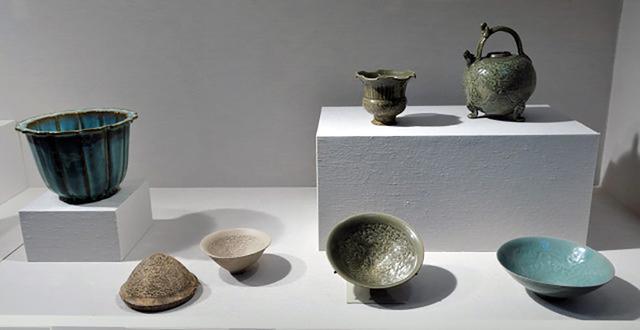
A Universal Formula for Naming Chinese Porcelain Tea Sets
Based on the above naming standards, we can come up with a universal formula. It allows you to name a porcelain teacup in just 3 seconds, making it look cool, like an archaeologist!
Universal formula:
Time (Era + Year) + Location (Kiln/Place of production) + Surface decoration (Glaze color or type of polychrome + pattern) + Characteristics (Part characteristics/Biomimetic shape/Function) + Material + Vessel shape
You can try applying this formula to any porcelain image you find online and see if it works.
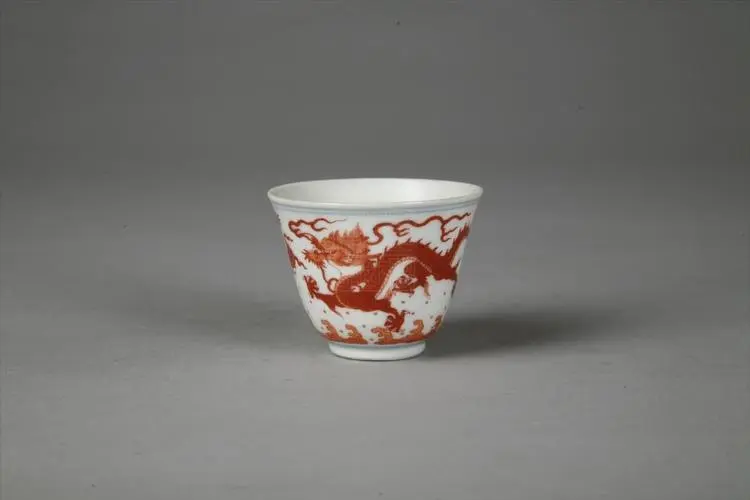
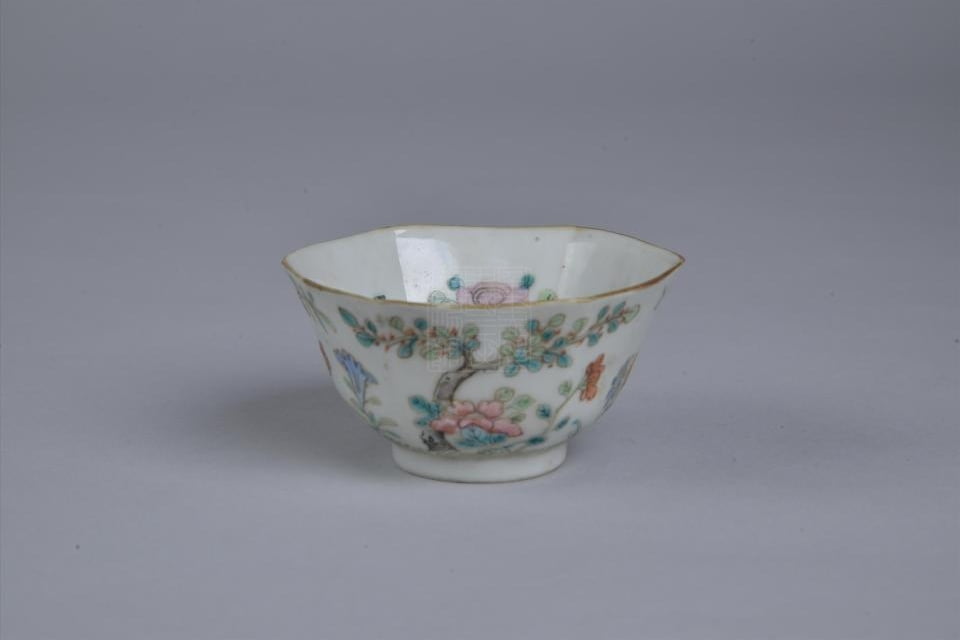
Additional Note:
Before the Ming Dynasty, porcelain pieces didn’t carry any era marks. As a result, these items are typically identified by their dynasty, or an early or late phase within that dynasty. For instance, you’ll find labels like “Northern Song,” “Southern Song,” or “Early Song Dynasty.”
From the Ming Dynasty onward, it became common for many porcelain works to bear era marks. These marks are usually included in the identification of these pieces, like “Ming Xuande,” “Ming Chenghua,” “Qing Kangxi,” and so forth. That said, it’s important to note that not all Ming and Qing porcelain items have era marks. Some porcelain cups might instead carry the name of their kiln factories, like “Zhuocun Tang” or “Guyuexuan,” stamped on their bases. In these situations, they can be referred to by a combination of the dynasty and kiln factory name.
In conclusion, this formula represents the mainstream naming convention, but individual porcelain names may omit certain elements or add new annotations. This naming method is not a strict rule set by national standards; it is just a rule followed out of convention, so there is no need to overly scrutinize or get caught up in whether a name is standardized.

How to Find Naming Information on Chinese Porcelain Tea Sets?
1. Check the reign marks on the base of the cup
When you turn the cup upside down, you can see the marks on the base. These marks serve as trademarks, with the reign marks representing the ruling dynasty’s position, and personal names or kiln marks representing the quality of the porcelain.
If the bottom mark provides clear information about the dynasty or kiln, the naming process becomes relatively straightforward. For example:
Perhaps you need some knowledge of Chinese characters because they are written in Chinese. But if you have a good memory, you can start by remembering a few of the most common ones:
Da Ming Xuande, Chenghua, Hongzhi. Da Qing Kangxi, Yongzheng, Qianlong, Jingdezhen
If you are interested, here are some resources to learn from:
Chinese Porcelain Marks
Ming Dynasty (1368-1644) reign marks
The Qing Dynasty (1644-1912) and their reign marks

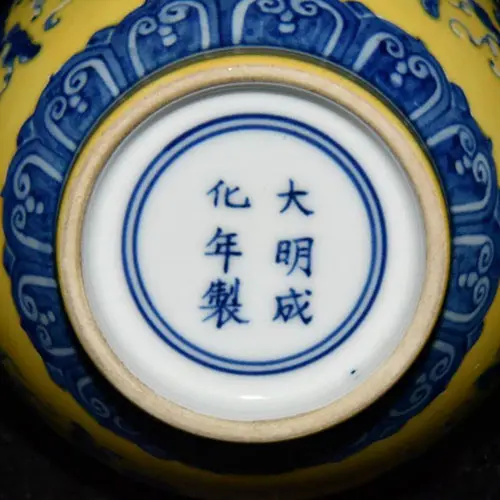
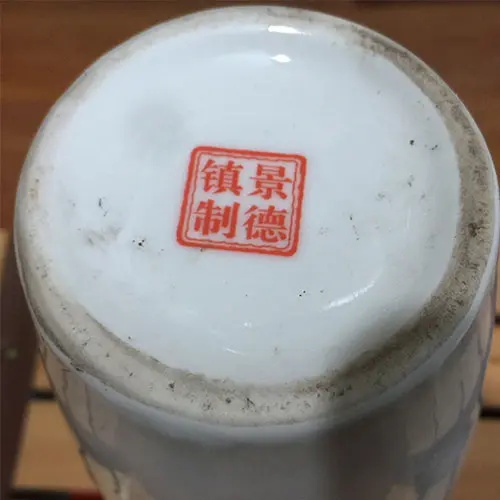
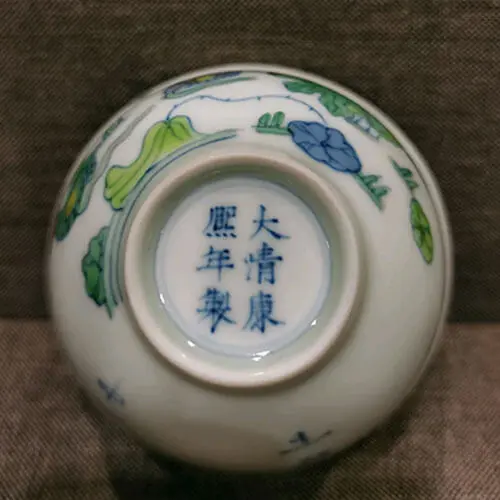
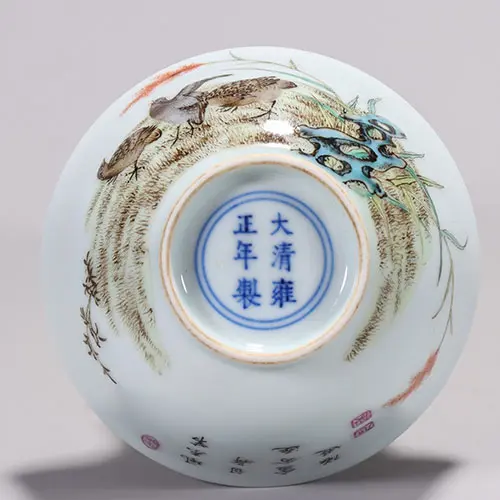
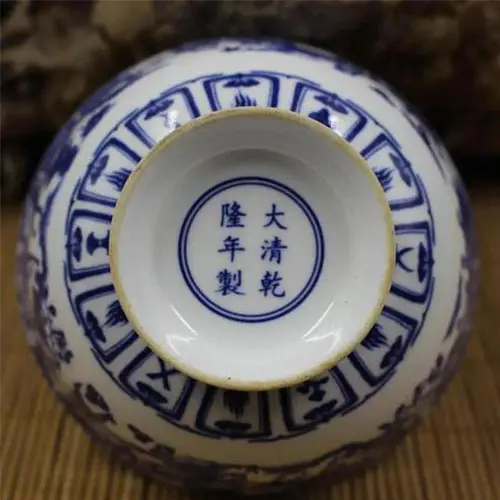
2. Observe the surface of the Chinese porcelain tea sets
Observe whether there is a layer of glass on the surface of the porcelain, which is the glaze.
In addition to making the porcelain delicate, durable, stain-resistant, and corrosion-resistant, the glaze also plays an important role in giving the porcelain colorful hues. We call it glaze color.
Glaze color has always been the primary means of decorating porcelain. Throughout the more than 2,000 years of porcelain production history, China has created countless glaze colors: blue, white, black, green, yellow, red, blue, purple, and more…
Monochrome glaze
Applying a single color glaze to a piece of porcelain is called “monochrome glaze,” also known as “pure color glaze” or “single glaze.”
Due to the different chemical composition of the glaze, the fired porcelain exhibits different monochromatic shades. Common colors include white, black, red, yellow, blue, purple, and more.
Red glaze
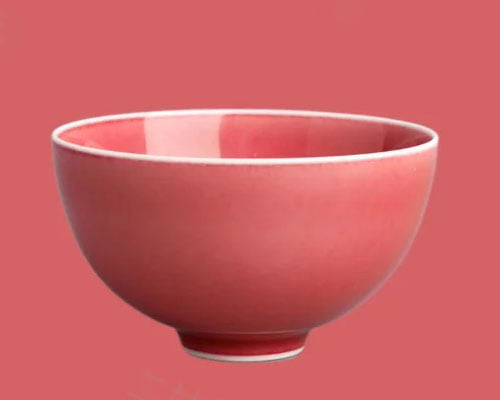
Jun red is a precious variety of red glaze from the Kangxi period. It is named after its uneven pink color, resembling red jun beans.
Green glaze
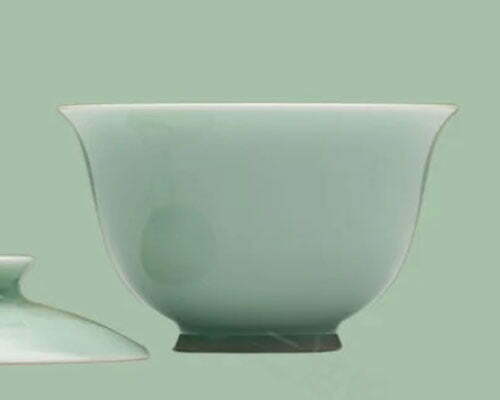
Cuiqing glaze is a type of blue glaze from the Yongle period, named for its green color resembling lush bamboo.
Blue glaze
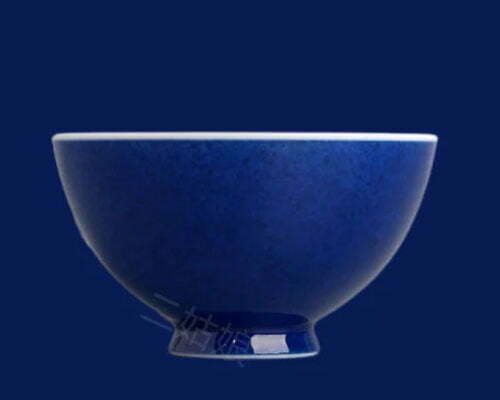
Sala glaze is a distinctive variety of blue glaze from the Xuande period, named because the glaze on the porcelain surface resembles scattered drops of blue water.
Polychrome glaze
Painting on the surface of porcelain is called polychrome glaze. There are numerous types of glaze colors, including overglaze enamel, underglaze enamel, and blue and white.
Overglaze enamel
Overglaze enamel refers to painting on finished porcelain and then baking it in a kiln. Due to the relatively low baking temperature, there are many types of pigments that can withstand this temperature, resulting in a wide range of colors.
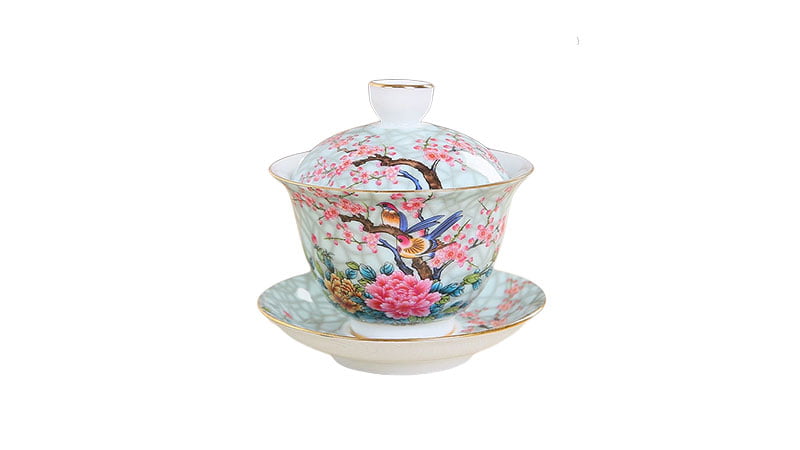
Underglaze enamel
Underglaze enamel refers to painting under the glaze, which involves painting on the body of the porcelain and then covering it with a transparent colorless glaze. It is fired at a high temperature of around 1300 degrees Celsius along with the porcelain. Since the pigments used in underglaze enamel need to withstand high temperatures, the variety of colors is not as rich as overglaze enamel.
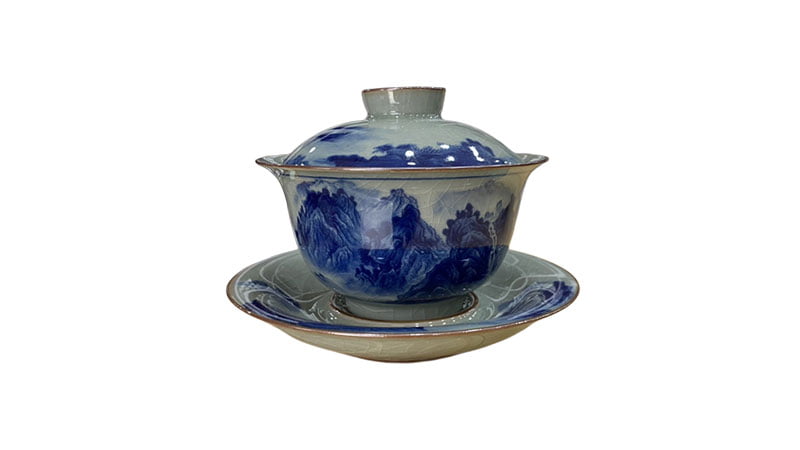
Blue and white porcelain
Blue and white refers to the application of cobalt pigment on the porcelain body, followed by the application of a transparent glaze. It is fired at a high temperature of around 1300 degrees Celsius, resulting in blue patterns beneath the glaze.
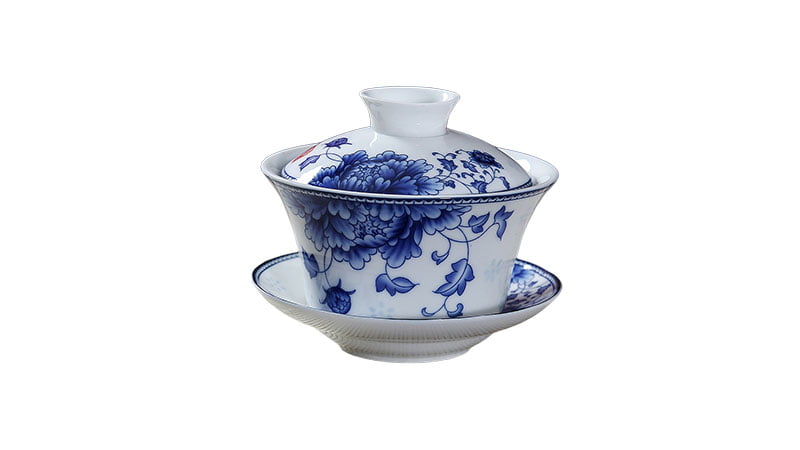
3. Observe the patterns on the surface of the teaware
The paintings on the surface of porcelain have auspicious meanings. Some common ones include:
- Plant patterns – For example, peonies represent wealth and lotus flowers symbolize purity of spirit.
- Animal motifs – Bird and animal patterns serve as a representation of the natural world, full of vitality.
- Figure motifs – Depictions of children playing, beautiful women, and folk stories are common painting themes, full of life and interest.

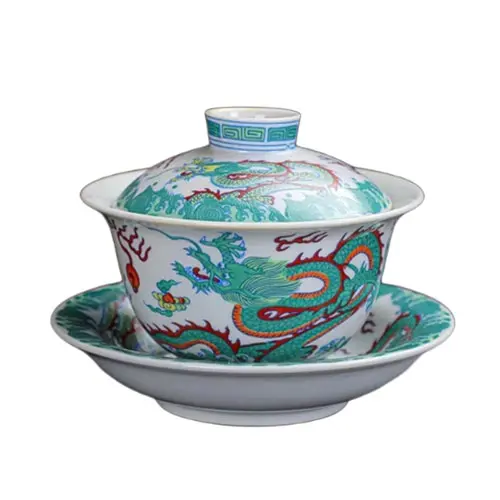
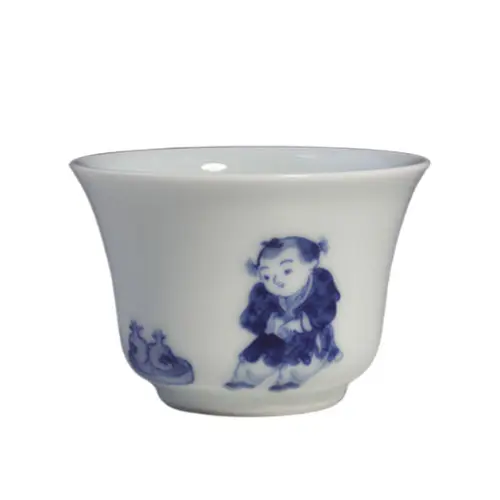
4. Characteristics
Tea utensils are often named based on specific part characteristics or shapes.
Part characteristics can be named after the rim, waist, or foot of the vessel. For example, straight rim, wide rim, flower rim; straight waist, slanting waist, curved waist; ring foot, tall foot, flat base, and so on.

Interestingly, Chinese tea cups are designed to mimic natural shapes, such as hat shapes, lamp shapes, drums, horseshoes, chicken hearts, and more. You can use these shapes to describe the tea utensil, making it clear and memorable.
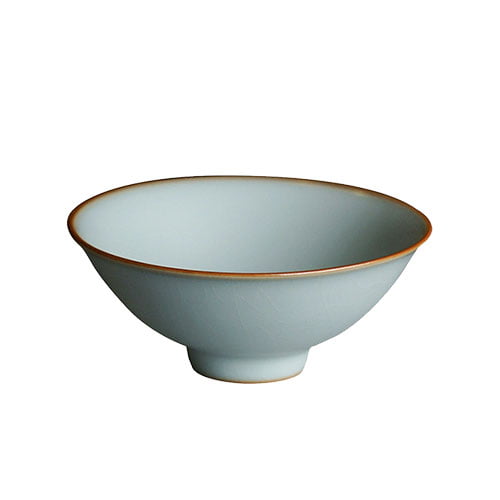


There is also a special case where naming is based on functional characteristics.
For example, there are aroma(fragrance-smelling) cups used for smelling fragrance instead of drinking tea, and chinese meditation cups, which are tea sets used for both tea drinking and meditation practice.
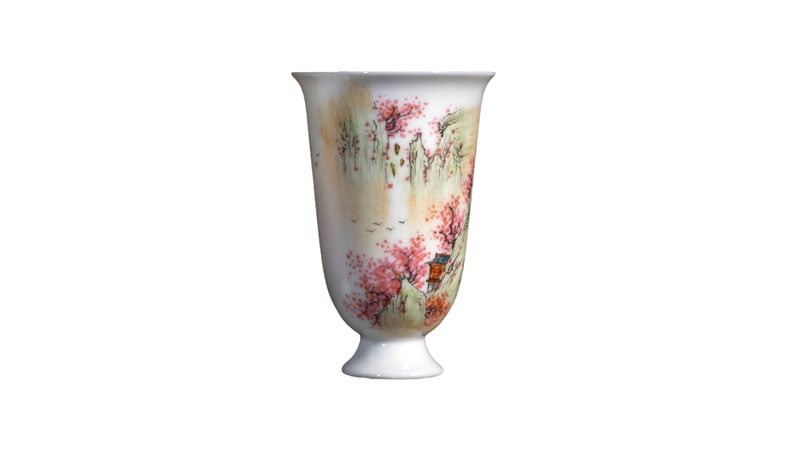
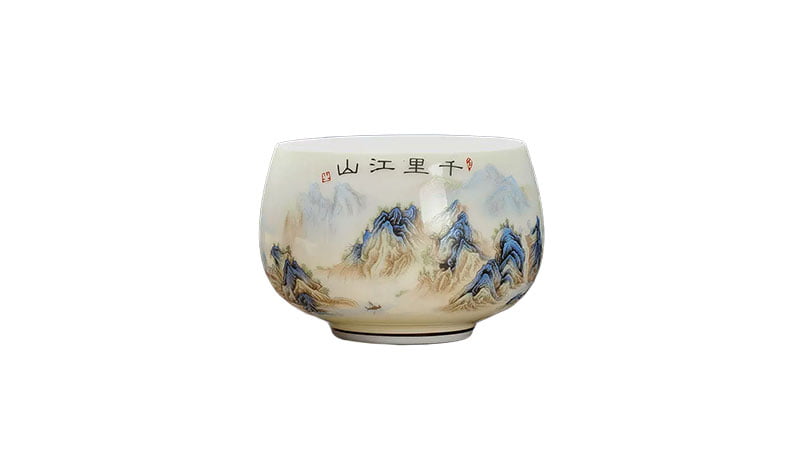
5. Materials
Most chinese tea sets are made of porcelain, but there are also some made of pottery. However, the glaze cannot distinguish between pottery and porcelain, and many people may get confused. Can you tell the difference? Let’s try:
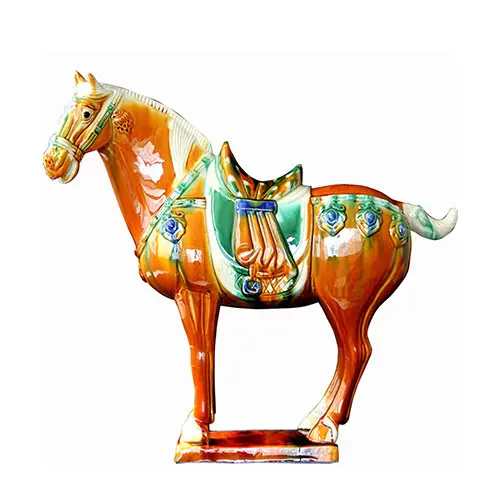
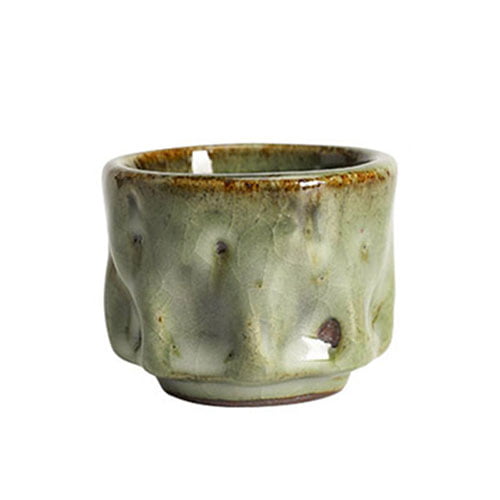

Let me explain the difference between pottery and porcelain so that you can easily distinguish them through simple observations.
(1) Transparency
Due to the different clay materials used, pottery, even though it can be as thin as an eggshell (such as Longshan Culture black pottery), is not translucent, while porcelain, regardless of its thickness, gives a feeling of jade-like and semi-transparency.
(2) Color
Due to the difference in iron content, the colors presented after firing are different. Pottery is primarily yellow-brown, while porcelain is predominantly white. The original color of the material can be seen from the parts of the bowl bottom that are not covered by glaze.
(3) Sound when tapped
Due to the lower firing temperature and incomplete vitrification of pottery, its hardness is not high. When tapped, the sound is relatively dull. Porcelain, on the other hand, has high hardness, and when tapped, it produces a clear sound.
6. Vessel shape
Tea sets are divided into cups, bowls, teapots, and tea bowls, each serving its purpose in the tea ceremony. This is relatively easy to distinguish.
By following these guidelines and observing the relevant information on the tea cups, you can confidently and accurately name the porcelain tea sets like an archaeologist.
Conclusion
Now you know the ins and outs of naming Chinese Porcelain Tea Sets. Why not give it a shot? Take a look at your favorite tea cup set and see if you can identify its era, location, surface decoration, characteristics, texture, and vessel shape. Remember, practice makes perfect. Happy tea drinking and tea set naming!
FAQ
Q1: What do reign marks on porcelain tea sets indicate?
A1: Reign marks found on porcelain tea sets provide valuable information about the era or dynasty in which the piece was made. They often include the name of the emperor and the period of his reign. This allows historians and collectors to determine the approximate age and origin of the tea set.
Q2: Can the shape of the porcelain piece affect its name?
A2: Yes, the shape of the porcelain vessel can indeed affect its name. The names of Chinese porcelain items often reflect their function or the object they’re designed to mimic. For instance, a tea cup shaped like a lotus flower might have “lotus” in its name.
Q3: How can I distinguish between pottery and porcelain based on texture?
A3: Pottery tends to be opaque, thicker, and more textured than porcelain. When tapped, it produces a duller sound compared to porcelain. Porcelain, on the other hand, is translucent when held up to the light, and produces a clear, ringing sound when lightly tapped.
Q4: Are there differences in naming between pieces from guan kilns and ming kilns?
A4: The naming conventions typically revolve around similar principles (era, location, characteristics, texture, vessel shape) for both types of kilns. However, pieces from guan kilns, which were meant for imperial use, may carry more elaborate names and designs, and might include imperial symbols or motifs.
Q5: What is the significance of the glaze color in the naming of Chinese porcelain tea sets?
A5: The glaze color plays a significant role in the naming of Chinese porcelain tea sets as it’s often indicative of the time period or place of production. Certain glazes, like Celadon or blue-and-white, were popular during specific dynasties, and thus the glaze color can provide important information about the set’s origin and age.
